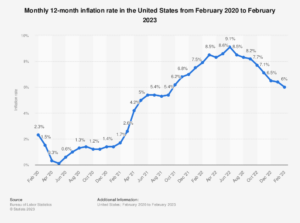Summary:
-
Skills management is the administrative practice of assessing and recording employee competency in skills associated with their job roles.
-
Actively assessing, recording, and tracking skills competency not only assists HR functions like hiring and succession planning, but it also helps operations teams boost productivity and engagement.
-
Use skills management software to easily assess and record employee skill levels across your workforce.
Are you making the most of the skillsets present in your workforce?
While you may be tempted to say yes, most would actually answer no. In fact, research shows that only 14% of business executives strongly believe that their organization is using their workforce’s skills and capabilities to their fullest potential.
Proper skills management is an underutilized strategy these days, especially within hourly businesses. But figuring it out could lead to higher productivity and better employee engagement in the long run.
What is skills management?
Skills management is the process of assessing employee job competencies and mapping them to your organization’s labor needs. Think of it like taking inventory of your resources; only this time, you’re dealing with talents, certifications, and skill levels.
Cataloging employee skills helps you identify skill gaps present in your organization. More importantly, it gives you the data you need to bridge these gaps, be it through upskilling, reskilling, or hiring new talent.
Webinar: How to Track Skills Development
Why should you adopt skills management?
Spoiler alert: it’s not a matter of whether you should or not. Successful organizations know that they actually need skills management. Here’s why:
Improve employee productivity
Skills management has long-term benefits, but it’s also a quick and relatively easy way to make an immediate impact on productivity. A good skills management strategy will give you insight into how to utilize employee skills on the front line better. This could take the form of scheduling staff with better customer service skills during busier shifts or pairing more qualified staff with new hires for difficult projects.
Keep up with emerging technologies and trends
Skills management allows you to project the trajectory of certain job roles. What will they look like down the line? Will they evolve and require new skills? Will they become obsolete?
Research shows that 59% of hiring managers expect that AI and other forms of workplace automation will cause a significant shift in the kinds of skills employees need to have. Actively tracking essential skills helps your decision-making regarding future talent needs.
Impactful succession planning
If a core team member becomes unavailable due to resignation or an extended leave of absence, can someone fill the gap?
Skills management provides insights for succession planning and ensures that your team and operations aren’t crippled when a good manager or senior staff member suddenly leaves or becomes unavailable.
Succession planning is the strategic transfer of knowledge to future-proof your workforce. Skills management gives you the data you need to execute this strategy. For example, you might use skill competency scores to determine whether any of your staff are suited for a management position. If so, great. If not, you can come up with a professional development plan to flesh out important skills needed for the role, or you can simply hire outside talent.
Make better hiring decisions
Skills management also provides direction for your talent acquisition. Roles evolve, technologies emerge, and workflows change. Skills management data can help HR navigate these shifts and equip them with the data they need to address talent gaps properly.
For instance, some organizations focus more on identifying skills needed for vacant positions rather than looking for candidates with matching job titles. This is called the skill-based approach and can be done either externally or internally.
Looking at your catalog of employee skills can inform these hiring decisions, whether internal or external, and put your organization in a better position to hire with confidence.
Improve employee retention
Along with burnout, wage issues, and a poor physical work environment, limited opportunities for career advancement also lead to high levels of employee churn.
74% of employees say that training and development are important to an organization’s strategy, but only 34% are happy with the organization’s investment in their skills and performance.
Webinar: How to Stop Employee Turnover
Employees find value in skills and development training, and even more so with opportunities that allow them to grow. You may have some training programs, but if they don’t meet staff aspirations, they won’t help retention. When you prioritize skills management, you’ll identify training opportunities that your workforce will find beneficial and worthwhile. It will allow you to curate learning and development opportunities that actually resonate with employees.
How to build a skills matrix
A skills matrix is the backbone of a skills management strategy. It is a tool to record, identify, and analyze the skills across an organization. Think of it as a grading system that allows you to see the skills present in your workforce, how they are being utilized, and if additional training or people are needed.
Here are the steps on how you can build an effective skills matrix:
Define the skills important to your workforce
This may seem straightforward, but it can be easily overlooked. These can be hard skills like coding language proficiency, or they can be soft skills like problem-solving, teamwork, and effective communication.
Break down these skills by team/job role
Doing this helps you make sense of what you should evaluate each of your employees on. For instance, keeping a record of a chef’s cash register competency probably does not make sense. Pick and choose what skills you will be evaluating employees on based on what skills are relevant to their role.
Evaluate each employee according to skill
Create a ranking system for each skill and grade your employees according to it. Self-evaluation, peer feedback, and performance reviews are useful ways to inform how you grade these competencies.
- Employee self-evaluation – Ask employees to rate themselves according to their skills and competencies. While this may not paint the whole picture, this can give you a gauge of how employees perceive their capabilities.
- Peer feedback – Feedback from co-workers is also a valuable indicator to gauge the skills of your workforce. This is first-hand information from people they work with and may provide you with more information on how they fare on a granular level.
- Regular performance reviews – This insight comes from your managers based on their observations from daily operations and coaching sessions. This offers another perspective that can help validate what you have gotten from employees and their workmates.
Map out skill competencies to identify gaps
Once you have all the necessary information on staff skills, you can start mapping them out. You can do it manually on a spreadsheet or use a skills management system.
This skills matrix will give you a clear visualization of where your employees meet skill requirements and where they fall short.
While doing this manually is fairly straightforward for smaller businesses, large organizations may want to look for skills management software to streamline this process. This kind of software can also link directly with your scheduling system, meaning you can easily fill shifts according to skill and qualification requirements.
Best practices for skills management
Skills management can be daunting, especially with so many factors influencing your business goals and customer demands. To make the most of your workforce’s skill set, here are some best practices:
Make skills management an ongoing process
Skills management should be a continuous process, building upon previous iterations over and over until staff fulfill their potential.
If you have a skills management platform, it’s easy to check your team’s competencies anytime. Doing this allows you to address skill gaps and performance issues quickly. You can optimize schedules, revise training plans, assess the impact of emerging tech on certain roles, and set more timely check-ins with your employees.
Skills management should be closely tied to training and development
Skills management points your training and development efforts in the right direction. With a wealth of recorded skill competencies and needs at your disposal, you can easily devise training programs that have higher chances of producing results. Whether it’s upskilling, learning a new technology, or reskilling, you’d know the best type of training for your team at a particular time.
Use a skills management platform
It just makes things easier. Tracking and mapping skills to improve productivity is challenging, especially for bigger organizations. Having software do it for you eliminates the complexity of tracking your employees’ skill levels, increasing productivity, identifying gaps, and analyzing staff development. In addition, it interconnects your skills management with other important HR and ops functions, like performance, scheduling, attendance, and more.
Account for hard and soft skills
Technical skills are vital, but conceptual skills are equally important in a team. As you map your workforce’s skills, it’s best to consider both.
Hard skills refer to the technical competencies an individual needs to have to do job-specific tasks. Again, these skills can be learned with training and work experience.
On the other hand, soft skills are not job-specific competencies that typically include personal traits or characteristics. Communication skills, people or relational capabilities, and leadership traits all fall under soft skills. They are more challenging to measure than technical skills, but they indicate whether an employee can work with a team or thrive in an organization.
Take a look at the nature of a role to understand what soft skills are needed for it. For instance, client-facing functions should be for people with strong communication and people skills. Meanwhile, a head chef should have strong leadership capabilities to ensure that all kitchen stations are running smoothly.
Utilize a skills management platform
Developing both hard and soft skills is vital in today’s workforce. But, more than getting the job done, doing so helps with engagement and sets the tone for how well your team can work together.
Managing skills is one of the many moving parts of successful workforce management. To tie everything together, you need a system like Workforce.com.
Workforce.com’s skills management feature records, identifies, and analyzes skills across your organization. You can then optimize your schedules based on skills matrix data to ensure that best-fit staff are scheduled for the right shifts.
Book a call today to learn more about Workforce.com’s skills management platform and how it integrates with other WFM areas, such as employee scheduling, labor forecasting, and time and attendance.















